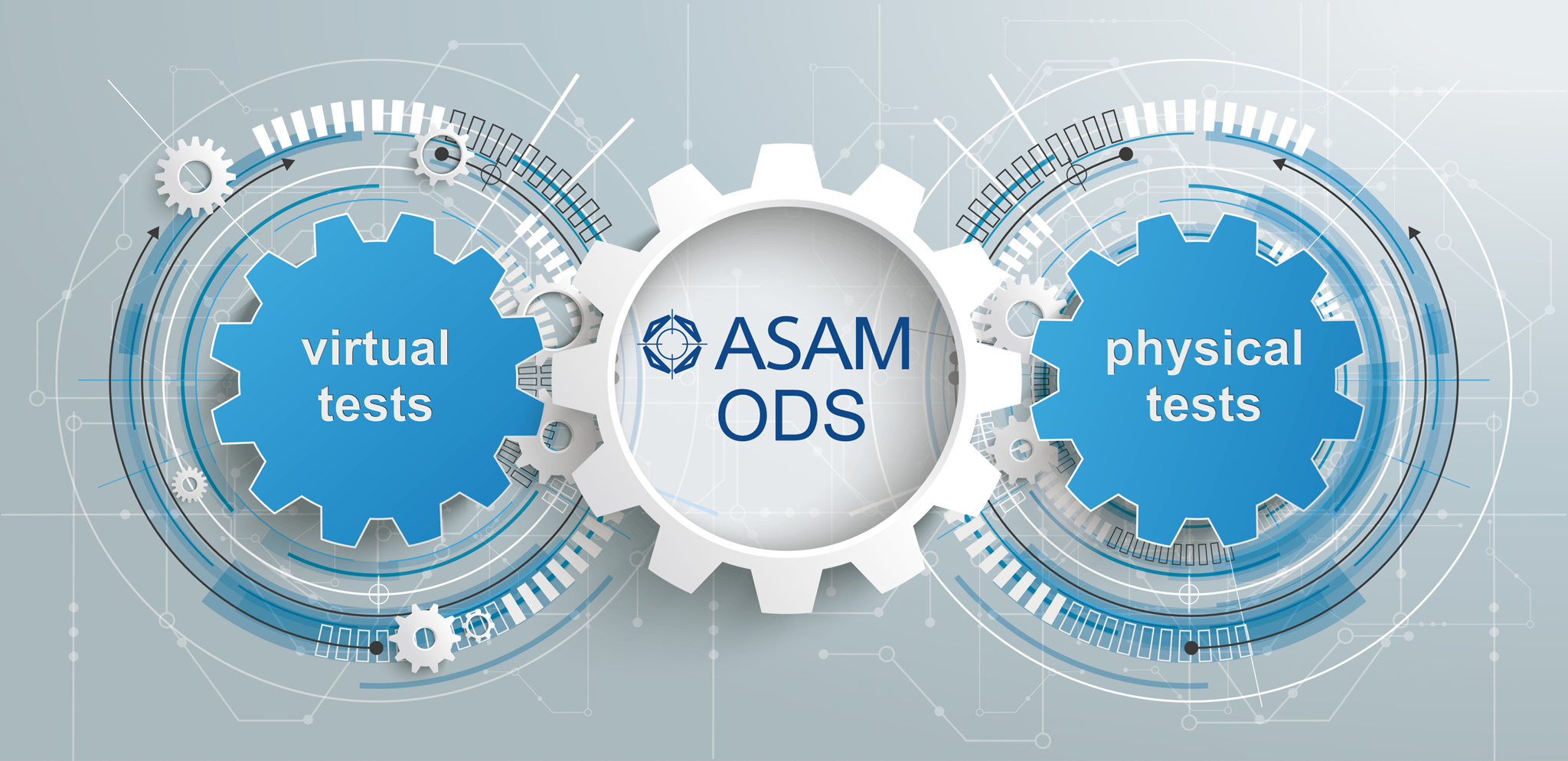Abo ut
ASAM ODS – A unified environment for measurement and simulation data
There is no doubt: Simulation is the future of vehicle development. It can be used to efficiently validate and verify the functions and behavior of individual vehicle components or entire vehicles. However, the data used and calculated within such simulations must be continuously compared with physically measured data, coming from test benches or road tests. In this way, the validity of simulation models can be gradually improved.
In order to make it easier for the user to compare measured data from physical tests with calculated results from virtual tests, it makes sense to bring them together in a joint data management solution. A good basis for implementing such a unified environment for measurement and simulation data is the wide-spread standard ASAM ODS.
ASAM ODS provides a data model that allows to flexibly link both measured and calculated data with meta data. The meta data describe the context in which individual tests or simulations took place. This encompasses, for example, descriptive information about the current construction status of a test object respective its digital twin. Furthermore the exact load parameters, including their physical quantities and units, as well as sensor positions of a test or simulation run can be documented. Only by means of such mutual aligned context information it is possible to meaningfully compare measured data with simulation results. Otherwise there is a high risk of comparing apples with pears.
A key benefit of the ASAM ODS data model is its generic nature and independence from vendor-specific tools. This means that almost any metadata structure for a variety of test and simulation domains with changing requirements can be mapped with ASAM ODS. The well thought-out semantics of the data model ensure that the stored data can always be interpreted correctly by all ODS-compliant tools.

The data in ASAM ODS is accessed via a defined interface (API). Since the underlying interface specification is available to everyone, user companies remain flexible at all times when implementing interoperable tool chains. Within their solutions they can use the products of those tool providers that are obviously best suited for specific measurement, calculation and analysis tasks.
Over the years, specialists like Peak Solution have developed powerful ASAM ODS servers and supplementary tools, with which user companies and tool providers can implement ODS-based data management solutions quickly and inexpensively. Thus, test data management can be standardized and made interoperable throughout the company. This means: Instead of proprietary and self-contained solutions, open and individually expandable work environments with best-in-class tools are created. The result is a comprehensive and consistent view on test and simulation data for all involved.
